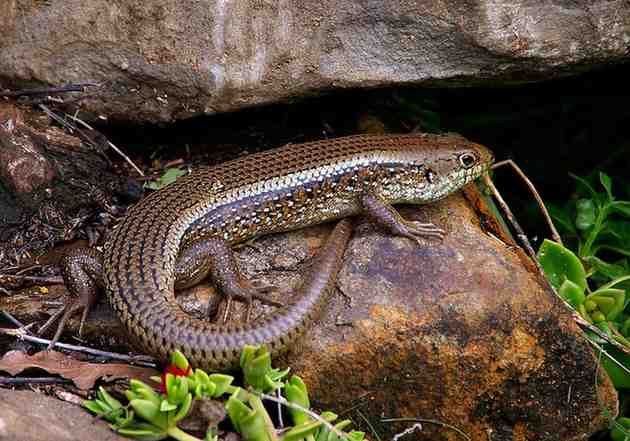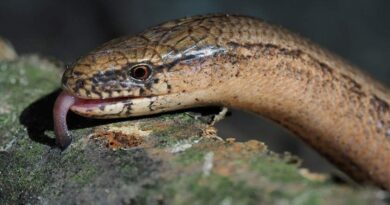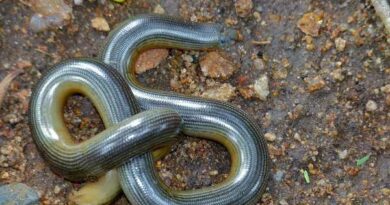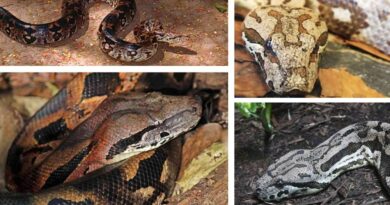SKINKS
SKINKS, with over 600 species, comprise one of the two largest lizard families. They are generally smooth-scaled and cylindrical, with conical heads and tapering tails, short legs or none at all, overlapping scales and a pro- trusible tongue. The majority are under 1 ft (30 cm) in length and most are less than 8 in (20 cm), the smallest being barely 3 in (7 cm) long. They are mostly ground-dwellers and burrowers, but many climb about in bushes
trees, although only one has a prehensile tail and thereby shows some specialization for arboreal life. This, the Solomon Islands Giant skink Corucia zebrata, is also the largest of the family and just exceeds 2 ft (61 cm) in length.
Skinks are the most abundant of the lizards in Africa, the East Indies and Australia. In Australia the number of species of skinks exceeds that of any other family of reptiles. Half the species lay eggs, others give birth to living young, and one genus includes both egg-layers and live-bearers. The egg-layers may have clutches of 2-23 eggs, but live bearers seem to have smaller broods as a general rule. Some American skinks actively tend their eggs from the time they are laid in the nest until they hatch, and one species even cares for its brood after hatching.
The smaller species of the skink family feed mainly on insects, the largest skinks are wholly or partly vegetarian.
For protection from their enemies, skinks rely mainly on their retiring habits and the ability to throw off and then replace all or part of the tail. When alarmed or threatened, a skink raises its tail in the air, turns it towards 1tS enemy and waves it slowly back and forth. The tail, once broken off, will wriggle Violently for some time, diverting attention from its former owner.
One of the best known skinks is the Australian Blue-tongue skink Tiliqua scin- coides, 12-15 in (30 40 cm) long, frequently kept as a pet. The name refers to the light or deep blue tongue, which is slowly but constantly flicked in and out whenever the animal is alert or on the move. Another attractive Australian skink is the Shingle- back lizard Trachysaurus rugosus up to 18 in (45 cm) long, also known as stumpy-tail, bobtail, Double-headed lizard, boggi, and Pine-cone lizard. Unlike the other Australian skinks, the shingle-back generally has only two young at one time, only occasionally triplets. It is a sluggish animal, and feeds on flowers and fruit, as well as snails and slugs. FAMILY: Scincidae, ORDER: Squamata, CLASS: Reptilia.



